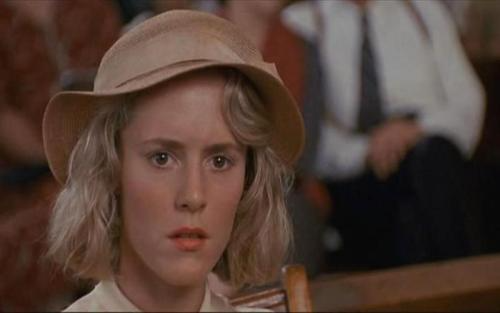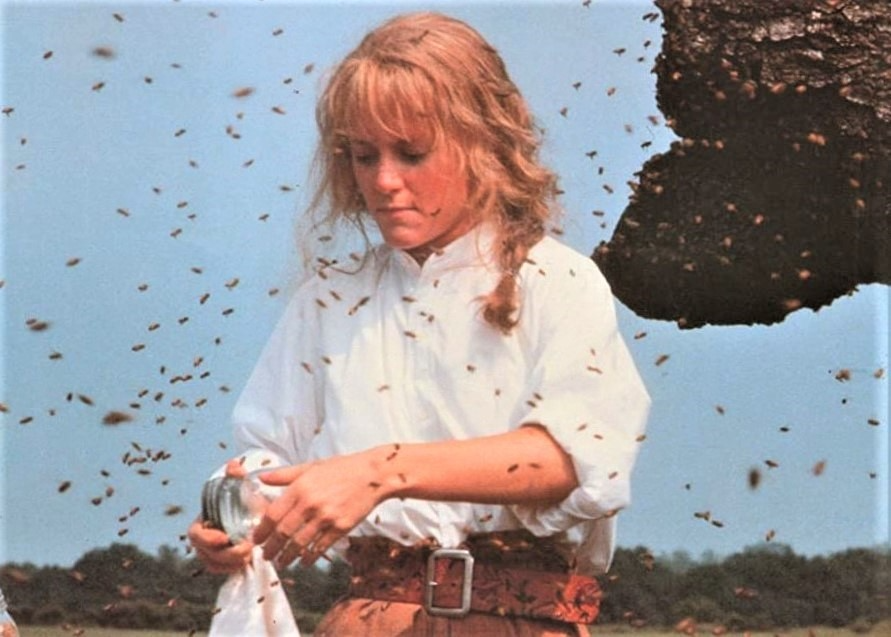
The Scene that Defines a Spirit
Among many unforgettable moments in Fried Green Tomatoes (1991), few scenes better capture the essence of Idgie Threadgoode than the one where she leaps off a train trestle into the river below. It’s a split-second decision—wild, bold, and utterly unapologetic. The scene, rich in metaphor, humor, and character insight, is emblematic of everything Idgie stands for: rebellion, joy, and an untamable spirit.
This scene takes place not long after Ruth returns to Whistle Stop and begins building a life with Idgie at the café. On a sunny afternoon, Idgie dares Ruth to follow her to the trestle bridge. Ruth is hesitant—concerned, cautious, maternal. But Idgie is already halfway across the tracks, calling out to her with that infectious grin and devil-may-care attitude. When the train starts coming, instead of panicking, Idgie laughs—and jumps.
Idgie’s Defiance and Freedom
Idgie’s dive into the river is more than just a physical stunt. It symbolizes her complete rejection of the social norms that seek to constrain her. In the deeply conservative American South of the 1920s, women were expected to be proper, submissive, and domesticated. Idgie is none of those things.
She wears trousers, drinks with men, swears like a sailor, and doesn’t ask for anyone’s permission. Her leap from the bridge—spontaneous and unflinching—is a visual embodiment of her character. She doesn’t just flirt with danger; she embraces it, trusting herself and nature to carry her through.
The water, in turn, becomes a symbol of rebirth and freedom. It’s not punishment or recklessness—it’s exhilaration. The look on her face as she surfaces, laughing, shows a woman who knows herself and lives without apology.
Ruth as the Grounded Counterpart

Ruth Jamison, in contrast, watches in horror from the trestle. She is, at this point, still shedding the layers of trauma and repression from her abusive marriage. Where Idgie is wild and free, Ruth is cautious and still somewhat imprisoned by the expectations of womanhood that once kept her in chains.
But Ruth’s gaze is not only shocked—it’s also filled with something else: admiration. The way she looks down at Idgie, who is laughing in the water, reveals the budding affection and awe she feels for this wild, beautiful creature who is offering her a new way of living.
This moment subtly deepens their connection. Ruth doesn’t jump—but her heart leaps. She sees in Idgie what life could be. Her eventual transformation, from a submissive preacher’s wife to co-owner of a small-town café and partner in quiet rebellion, begins with moments like this.
Cinematic Choices that Elevate the Scene
From a filmmaking standpoint, the trestle scene is brilliantly crafted. The sun-drenched Southern landscape, the rumble of the train in the distance, the tension of the narrowing time window—it all builds suspense without ever losing its sense of playfulness.
Director Jon Avnet captures the spirit of the moment through quick cuts and warm cinematography. The train is real, the water is real, and so is the sense of danger. But it’s never threatening; it’s liberating. The scene blends adrenaline with laughter, fear with joy—a balance that Fried Green Tomatoes manages with stunning consistency throughout.
The use of humor is also key. Idgie yells at Ruth to “Come on!” with that signature grin, and even after jumping, she teases Ruth for not following. Her mischief isn’t mean-spirited—it’s inviting. She wants Ruth to loosen her corset, figuratively and literally, and embrace life’s unpredictability.
The Scene’s Deeper Themes
This short but powerful scene taps into several broader themes of the film: freedom, defiance, intimacy, and identity. It asks the audience to consider what it means to live authentically. Idgie doesn’t just reject rules—she creates her own. And more importantly, she invites others to do the same.
For Ruth, the moment is a fork in the road. She doesn’t jump, but she stays. She watches. And in watching, she begins to internalize the idea that life doesn’t have to be fearful or scripted. That love doesn’t have to be about sacrifice and submission—it can be about joy, choice, and partnership.
Idgie’s jump is also an act of intimacy. She knows Ruth is watching. The entire stunt is for Ruth’s benefit. It’s a performance, yes—but also a promise. “Stay with me, and life will be an adventure. It will be free.”
Lasting Impact on the Audience
Audiences remember this scene not only because it’s visually thrilling but because of what it represents. For many viewers—especially women, queer people, and those who have lived within constricting norms—Idgie’s leap is a wish fulfilled. It’s the fantasy of self-possession. Of being brave enough to jump. Of not waiting for permission to live fully.
It’s also one of those rare movie moments that can make you laugh and cry at the same time. The humor of the setup (and Idgie’s taunting), the physical thrill of the dive, and the emotional weight of Ruth’s reaction combine into something unforgettable. It captures the spirit of Fried Green Tomatoes in just a few seconds: life is hard, but it can also be wondrous—and often, the ones we love make it worth the risk.
The Legacy of the Trestle Jump
Even decades after the film’s release, fans return to this scene with reverence. It’s often cited in retrospectives and fan discussions as a defining Idgie moment. It’s even inspired real-life reflections on bravery and breaking free from trauma or social constraints.
In some ways, this scene is a rite of passage—not only for Ruth but for the viewer. Idgie doesn’t ask you to be like her. She simply shows you that you can be.
